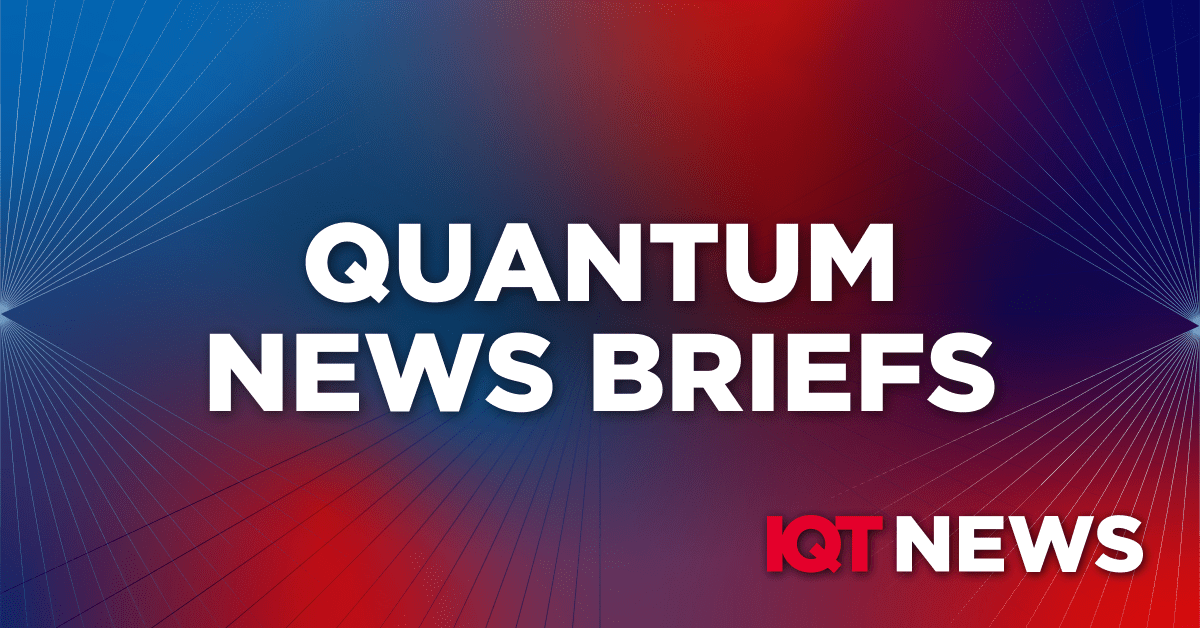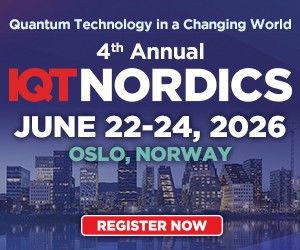Quantum News Briefs: March 14, 2024: QuSecure Launches Crypto-Agile Post-Quantum Cryptography Protection for Cisco Router Network Encryption; Keysight and Q-CTRL Team Up to Accelerate Infrastructure Quantum Software; ETH Zurich Researchers Create A New Ion Trap for Larger Quantum Computers; and MORE!

Quantum News Briefs: March 14, 2024:
QuSecure Launches Crypto-Agile Post-Quantum Cryptography Protection for Cisco Router Network Encryption
![]()
QuSecure™, Inc. announced the launch of QuProtect Core Security, introducing a groundbreaking post-quantum cryptography (PQC) solution to strengthen Cisco router-to-router communications against quantum computing threats. This advanced, crypto-agile PQC solution enhances the security of critical network infrastructures without hardware upgrades, offering a seamless integration for enterprises, government agencies, and telecommunications providers. QuProtect Core Security, which does not require hardware changes, allows for a simple upgrade to quantum-safe encryption, addressing the vulnerabilities of quantum decryption capabilities. The product comes when the U.S. government pushes for quantum-resistant technologies in anticipation of NIST’s official PQC standards. It features a unique blend of telemetry, orchestrated encryption controls, and an integration that minimizes operational disruptions. It is vital for securing data against current and future cryptographic threats.
Keysight and Q-CTRL Team Up to Accelerate Infrastructure Quantum Software

Keysight Technologies, Inc. (NYSE: KEYS) has partnered with quantum infrastructure software leader Q-CTRL to tackle the growing complexity in quantum processor development by integrating key quantum software into Keysight’s Quantum Control System (QCS). This collaboration aims to accelerate quantum processor development, characterization, and scientific demonstrations by addressing the challenges posed by the exponential growth of computational space as more qubits are added to processors. The integration of Q-CTRL’s Boulder Opal with Keysight’s QCS will enable quantum developers to scale processor quantity and quality more effectively, providing advanced AI/ML tools, autonomous optimization agents, and customizable experiments to enhance processor characterization, reduce development time, and foster innovation. This partnership reflects a shared commitment to advancing quantum computing technology and facilitating the development and scalability of real quantum systems, as emphasized by the positive feedback from quantum users that spurred this innovative collaboration.
ETH Zurich Researchers Create A New Ion Trap for Larger Quantum Computers
Researchers at ETH Zurich have found an advancement for quantum computing by developing an ion trap that utilizes static electric and magnetic fields to perform quantum operations, potentially enabling quantum computers to house far more qubits than current technology allows. Traditional ion traps rely on oscillating electromagnetic fields, which limit the number of qubits due to complexity and heating issues as systems scale up. Using a Penning trap on a microfabricated chip, the new approach overcomes these limitations by allowing ions to be transported in any direction and multiple traps to be integrated on a single chip. This development facilitates arbitrary ion transport and enables coherent control of qubit energy states, paving the way for more scalable and efficient quantum computing architectures. This innovation could lead to significant advancements in quantum computing, offering a more viable path toward realizing the full potential of quantum technology.
In Other News: Quanta Magazine article: “Physicists Finally Find a Problem That Only Quantum Computers Can Do”
![]()
A recent Quanta Magazine article highlights that researchers have potentially identified a viable problem that showcases a quantum advantage, a pivotal step in affirming quantum computers as indispensable computational tools. This problem, rooted in the properties of quantum systems and their energy states, particularly focuses on finding a system’s local minimum energy state. This task remains challenging for classical computers but appears feasibly solvable by quantum computers. The discovery, led by a team including John Preskill and Robert Huang, represents a significant stride in quantum algorithms theory, suggesting quantum computers could excel in areas relevant to chemistry and material sciences. This breakthrough, emerging from developing a new quantum algorithm that simulates quantum thermodynamics, underscores the potential of quantum computing to tackle complex scientific challenges previously deemed insurmountable for classical computation, offering a promising avenue for demonstrating quantum computing’s unique capabilities.

























